
Odense is the third-largest city in Denmark. It has a population of 180,760, and is the main city of the island of Funen. By road, Odense is located 45 kilometres (28 mi) north of Svendborg, 144 kilometres (89 mi) to the south of Aarhus and 167 kilometres (104 mi) to the southwest of Copenhagen. The city is the seat of Odense Municipality and was the seat of Odense County until 1970, and Funen County from 1970 until 1 January 2007, when Funen County became part of the Region of Southern Denmark. Odense has close associations with Hans Christian Andersen who is remembered above all for his fairy tales. He was born in the city in 1805 and spent his childhood years there.

Frederik's Church, popularly known as The Marble Church for its rococo architecture, is an Evangelical Lutheran church in Copenhagen, Denmark. The church forms the focal point of the Frederiksstaden district; it is located due west of Amalienborg Palace.

Ferdinand Meldahl was a Danish architect best known for the reconstruction of Frederiksborg Castle after the fire in 1859. Meldahl was one of the leading proponents of historicism in Denmark.

Johan Daniel Herholdt was a Danish architect, professor and royal building inspector. He worked in the Historicist style and had a significant influence on Danish architecture during the second half of the 19th and the beginning of the 20th century. His most famous work is the Copenhagen University Library in Fiolstræde in Copenhagen which heralded a new trend. The strong use of red brick in large-scale cultural and civic buildings was to characterize Danish architecture for several decades. He was a leading proponent of the "national" school in Danish architecture of the period as opposed to Ferdinand Meldahl's and Vilhelm Dahlerup's "European" school.

Category:Knights of the Order of the Dannebrog
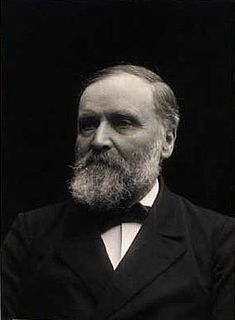
Ludvig Peter Fenger was a Danish architect. He was a proponent of the Historicist style and from 1886 to 1904 he was City Architect in Copenhagen.

Jørgen Hansen Koch was a Neoclassical Danish architect. He was chief of the national Danish building administration from 1835 and director of the Royal Danish Academy of Fine Arts from 1844 to 1849.
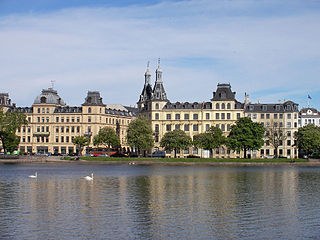
Søtorvet is an elegant late 19th century residential development facing The Lakes in Copenhagen, Denmark. It flanks the end of Frederiksborggade, where it turns into the Queen Louise Bridge, at the intersection with Øster and Nørre Søgade.
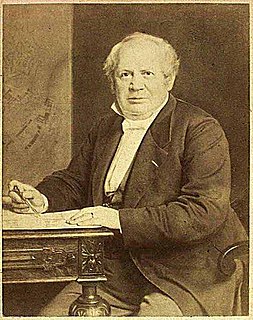
Niels Sigfred Nebelong was a Danish architect who worked in the Historicist style. He was city architect in Copenhagen from 1863 and also designed many lighthouses around Denmark in his capacity as resident architect for the Danish lighthouse authority.
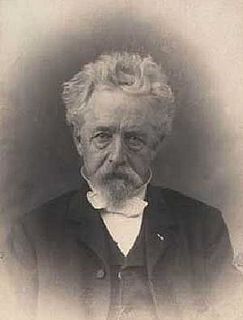
Vilhelm Klein was a Danish architect who adopted the Historicist approach, frequently emulating the so-called Rosenborg style and the Italian Renaissance style.
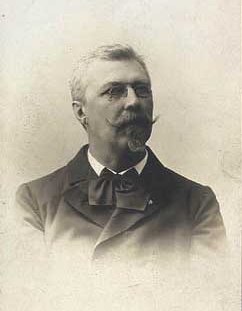
Albert Jensen was a Danish architect. He collaborated with Ferdinand Meldahl on several projects, including the completion of Marble Church in Copenhagen and Charlottenborg Exhibition Hall. He also designed the Magasin du Nord department store on Kongens Nytorv.

Odense Palace in the city of Odense on the Danish island of Funen has its origins in a 15th-century monastery which passed to the Crown after the Reformation, and since then has served as an administrative building: in turn as a seigneurial residence, an amt administrator's residence, a governor's residence, and a municipal government building. The main white Baroque building with 13 bays was designed by J.C. Krieger and completed in 1723.

Odense City Hall houses the administrative offices of Odense Municipality in the city of Odense on the Danish island of Funen.
Niels Jacobsen was a Danish architect and politician who worked primarily in Odense. He was also the Chairman of The Lego Group until his death.
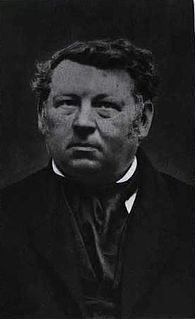
Carl Georg Ferdinand Thielemann was a Danish architect and royal building inspector during the 19th century. Thielemann was the brother of sculptors Christian and Theobald Thielemann and was born in Copenhagen. He studied architecture in 1819-20 at the Royal Danish Academy of Fine Arts under the tutelage of Christian Frederik Hansen. Thielemann was mainly taught the Neoclassical style but during the 1880s Historicism flourished and he adapted to the new style. After graduation Thielemann worked for Christian Frederik Hansen and Gustav Friedrich Hetsch as a conductor for their projects.

St Thomas Church is a church building of the Church of Denmark in the Frederiksberg district of Copenhagen, Denmark. It was designed by architect Carl Lendorf (1839-1918) and built in 1898.
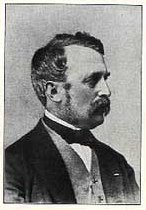
Harald Conrad Stilling was a Danish architect who was active in Copenhagen during the Late Classical period of the mid-18th century. He received the C. F. Hansen Medal in 1841.

Absalonsgade is a street in the Vesterbro district of Copenhagen, Denmark. It runs from Vesterbrogade in the north to Sønder Boulevard in the south and passes Istedgade on the way. The Museum of Copenhagen has a small display of historical street furniture next to its former building at the corner with Vesterbrogade. One of two entrances to the Shooting Range Garden is located in the street.

Kronprinsessegade 28 is a listed, Neoclassical property overlooking Rosenborg Castle Garden in central Copenhagen, Denmark.
Ruth Vermehren (1894–1983) was a Danish Lutheran priest, one of the first three women to become priests of the Church of Denmark. An active member of the Danish Women's Society, she was frequently invited to preach at the organization's events. As a result of legislation introduced by the Church Minister Carl Hermansen in 1947, the following year, together with Johanne Andersen and Edith Brenneche Petersen, she was ordained by Bishop Hans Øllgaard in Odense Cathedral. Denmark thus became the first country in the world to have women priests. Vermehren then served as a priest in Copenhagen's Women's Prison until she retired in 1964.




















